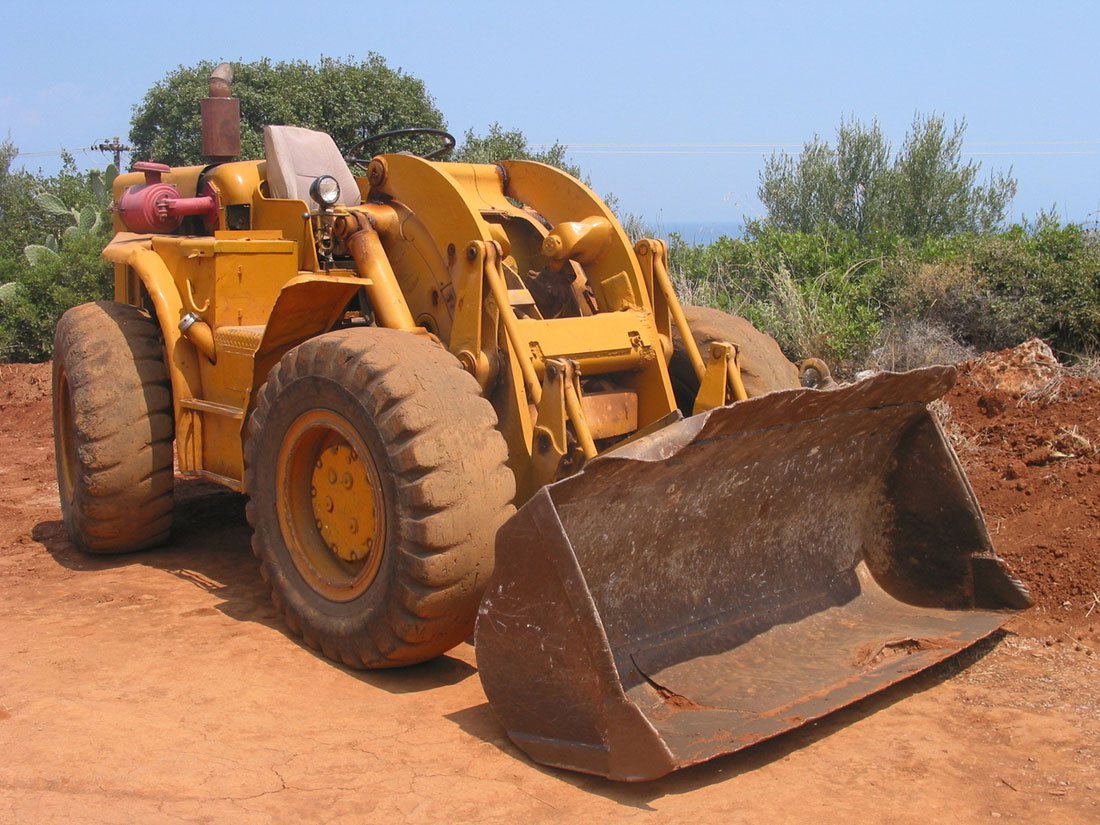How to inspect a used small dozer
By Marcia Gruver
Good used machines are at a premium these days, so it was the luck of the draw that we got to inspect not one, but two small dozers at the Tractor & Equipment yard in Birmingham, Alabama. Sitting side by side were a Komatsu 78-horsepower D31PX-22 with 500 hours and a 110-horsepower D41E-6C with 1,400 hours. Calling on his more than 30 years experience, Larry D. Foltz, district manager for Komatsu America, gave us an overview of both machines, and started out the inspection by verifying their serial numbers and hours. Next up: the walk around.
Walk around
Machine inspections start with a walk around, which allows you to get an overall sense of the machines condition. First, note whats on the dozer. What kind of blade does it have? Is there a winch or a ripper? Is the ROPS open or enclosed? Both of our machines had a power angle tilt blade with an open canopy. If either of them had had a ripper or an enclosed cab, the final price would have been adjusted upward.
As you walk around the machine, look for any structural problems. Examine the main frame, track frames, hood, sheet metal panels, grill, fuel tank and paint condition. Youre looking for dents, punctures, extreme scraping and evidence of welding or plating.
Examine all blade cylinders, hoses and pins. Are any of the cylinders dented or damaged? Has the chrome on the cylinder rods been scratched? If so, leaks will either be already present or eminent. If oil can get out, dirt can get in. Next, check the blade itself are there any welds or cracks? Are the edges worn if so, can they be turned? Are the blade pins and bushings tight? Any patches, visible cracks, welds or plates on the push arms? Check the trunnion or pivot point for wear. Are shims available to allow for adjustment? Do the blade grease points show signs of recent greasing?
Obvious signs of abuse on a dozer center around the blade and undercarriage, Foltz says. If you see punctures in the skin of the blade, or its ripped or indented, it may be a sign that its been pushing another machine or working in severe rock. The external appearance on a machine will tell you a lot, he says. Ive seen machines come in with no grab handles, knocked off guarding around the lights, bolts missing or engine hood covers are damaged or broken. Heavy rock applications or situations where contractors used too small of a dozer for the application will make the machine show advanced signs of wear.
Climb into the cab and take a close look at the condition of the ROPS, seat, seat belt, floorboards and mats, instrument panel and controls. If your unit has an enclosed cab, examine the doors, latches and all glass. Note the state of the steps, handrails and mirrors.
Tell-tale leaks
As you walk around the dozer, look for leaks on the cylinders and final drives, and for any engine or transmission leaks underneath the machine. Neither machines have any visible signs of final drive leakage on the inside of the tracks, Foltz says. Then inspect all interior compartments engine, battery and hydraulic for leaks. Foltz noted the battery covers were in place on both machines and all connections were tight.
Check all fluid levels, including engine oil and coolant, before you start the engine. You dont want to start something up thats low on oil and blow an engine, Foltz comments. Take oil samples of the engine, transmission and hydraulic oils. The 500-hour D31 is right at the point where the engine oil and filter would need to be changed. And check the dipstick for water, which could mean an internal water leak. While youre in the engine compartment, check the engine belt and tension. Examine the air filter.
Check for hydraulic leaks on hoses and fittings, Foltz says. Also look for cylinder rod damage, and leaks in the cylinders, valves, pumps and motors.
Operational checks
Turn on the dozer and listen to the engine. Does it start easily? Are there any unusual noises either from the engine or the turbocharger? Check the oil pressure.
While the blade of the D31 inspection machine had a few indentations on the spill guard, they werent significant.
Operate the machine, putting it through its paces. How easily does it steer left/right, and travel in forward/reverse? On dozers such as our review models with hydrostatic transmissions, listen for transmission noise and note vibration too much of either could mean worn pumps or motors.
Check out the electrical system: warning lights, gauges, batteries, work lights and monitor panel. If the cab is enclosed, make sure the heat and air conditioning works properly. Note whether the backup alarm works.
Look for leaks near the hydraulic control valves.
Operate all blade functions (angling, right/hold/left; tilting, right/hold/left; and lifting, raise/hold/lower/float). When you work the blade, look for any looseness, Foltz says. Is there any drifting movement after the blade has been stopped?
As you operate the brakes, make sure theres no grabbing or excessive noise. Also see if the machine brakes and steers left and right equally and thoroughly. And operate the parking brake. Although its difficult to do in some buying situations, you should be able to operate the dozer under load to truly assess its condition. Make sure it has the power to handle the load, Foltz comments.







